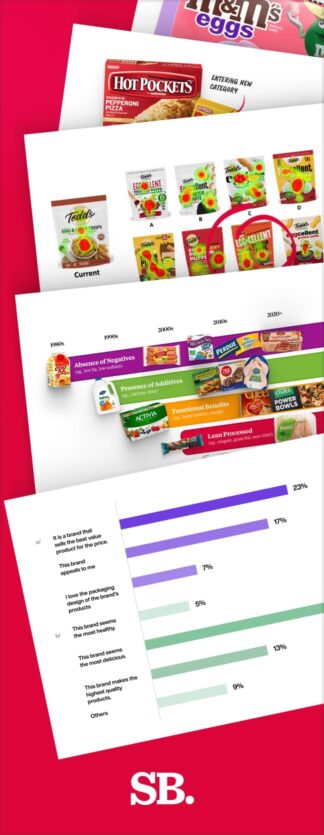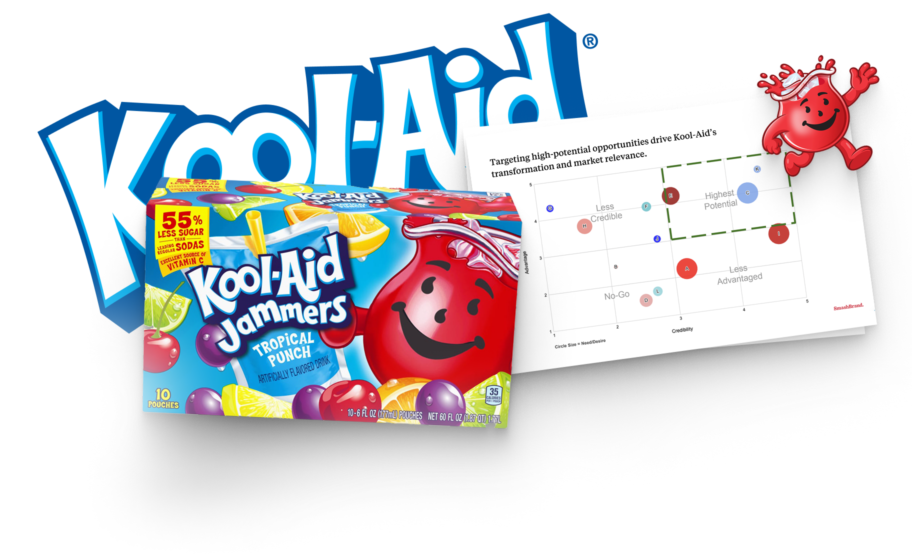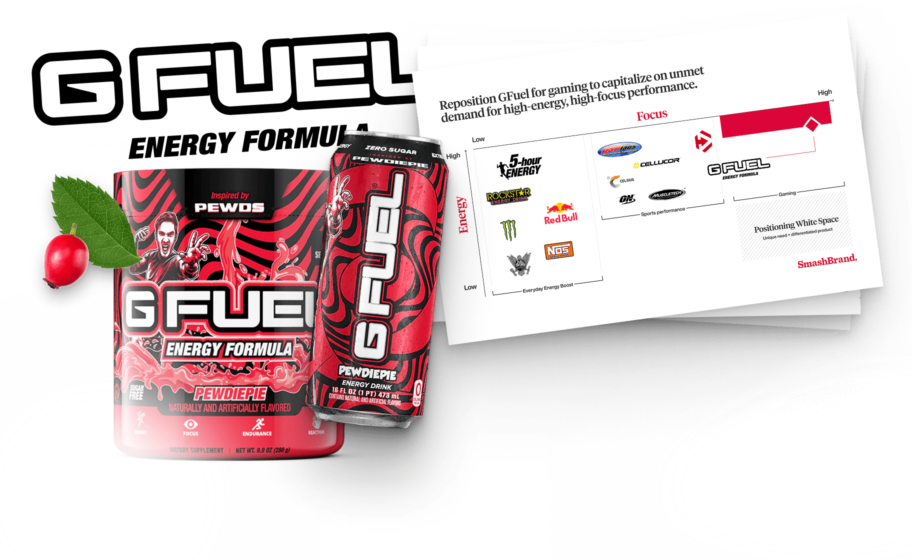Are you sure that you’ve put enough thought into your brand name development strategy? Probably not but since you are reading this article, you are on the right track. Since, it is the bedrock of your brand identity it deserves more respect than most companies give to brand name development.
Brand names shapes the customer’s perceptions from their first impression. But with so much riding on those few words, how can you ensure you choose the right name? A compelling brand name development process involves more than brainstorming clever names.
It demands in-depth research into your target market, understanding the interests of your target audience, and learning about the competitor’s strategy and brand positioning. A good brand name must convey the brand promise and personality. It may take testing multiple options, but the effort pays dividends when you land on a name that resonates with your customers.
This article covers critical steps like trademark searches, web domain checks, and launch planning to set your new brand name up for success. You will learn a strategic approach to building a compelling brand development strategy through effective naming. This article also explains aligning a potential name with an overarching brand strategy and identity.
Developing a brand name strategy.
Sometimes, businesses tackle naming and branding projects as standalone endeavors. This approach often results in names lacking a seamless connection to the brand identity. To develop a good brand name aligned with the brand personality, it is essential to create a thoughtful brand naming strategy first.
A well-structured brand naming strategy is the basic building block of coming up with compelling naming ideas. It includes all essential elements of brand naming to guide the naming process while minimizing risks. It provides the necessary groundwork for a name that works cohesively across the branding and aligns well with the core messaging. Here are the steps to developing a foolproof brand naming strategy
Outline the brand goals.
Before building a brand naming strategy, a company must have practical goals to achieve. For instance, a company may set goals to build a stronger brand identity, become the best-selling brand in the product line this year, or attract a new audience. Tying the naming process to practical goals will properly guide decisions.
Another essential element of successful strategy development is knowing your target audience accurately. Companies may divide their target audience into different segments, such as age, gender, location, culture, and language. Accurate information about the target audience helps companies avoid brand and product naming conventions that may cause conflicts.
Conducting market research.
The next step is to conduct market research after setting actionable objectives and knowing their target audience. Market research helps companies gain valuable insights into the current situations. Data from research allows companies to understand market trends and customer behavior toward naming ideas.
A company may analyze its main competitor and understand its product naming framework during market research. It reveals their strengths and weaknesses to guide the brand naming strategy accordingly.
Determine brand archetype.
This step helps narrow the name options to those representing the brand personality. For example, a bold, innovative brand may identify with The Hero brand archetype, and therefore, a company may choose a name that conveys courage and process.
A name implying tradition may clash with a disruptive brand aiming to shake things up. Steadfast brands seeking dependability could relate to The Sage archetype and names with undertones of wisdom.
Evaluating names through brand archetypes prevents a mismatch between the brand identity and the impression a name gives. It ensures that the brand personality shines through from the very first introduction. It also fosters understanding and loyalty with customers in the long term. The following table provides information on various brand archetypes that may guide the brand development strategy.
| Brand Archetype | Meaning | Characteristics | Examples |
| The Creator | Innovation and creativity | Nonconformist, introduces new technology, empowers self-expression | Adobe, Apple |
| The Sage | Knowledge, truth, and wisdom | Thought leaders, trusted sources, value solid facts | Google, BBC |
| The Caregiver | Empathy, compassion, and nurturing | Protects customers, motherly figure focuses on emotional elements | Healthcare brands, nonprofits |
| The Innocent | Purity and authenticity | Simple, positive outlook, avoids harm, embraces natural values | Nestle Pure Life |
| The Jester | Laughter and fun | Charismatic, doesn’t take itself seriously, encourages fun | Dollar Shave Club |
| The Magician | Transformative experiences | Turns ordinary into extraordinary, focuses on creativity and imagination | Disney, Polaroid |
| The Ruler | Power and domination | Influential, authoritative, associated with wealth and success | Gillette, Rolex |
| The Hero | Courage and inspiration | Bold and confident, tackles challenges, inspires people | Nike, FedEx |
| The Regular Guy (Everyman) | Belonging and blending in | Affordable, inclusive, targets the masses | IKEA |
| The Rebel | Nonconformity with aggression | Challenges societal norms, aggressive, value freedom | Harley-Davidson, Diesel |
| The Explorer | Desire for travel and discovery | Values freedom, seeks self-fulfillment, associated with adventure | Red Bull, Jeep |
| The Lover | Romanticism and passion | Values relationships, aesthetic appeal, focus on intimacy | N/A |
Crafting effective brand messaging.
The messaging behind your brand name is just as important as the name itself. Strong brand messaging communicates what your brand stands for clearly and compellingly. It defines your unique value proposition and why customers should choose you. Consider your brand’s personality, goals, and target audience when crafting messaging.
Use benefits-focused language that addresses customer needs and motivations. Keep messages concise yet memorable. Test different phrases and hone in on ones that feel authentic and generate enthusiasm. Incorporating the brand story makes it easier for the target audience to understand the brand. It also helps in the brand naming process.
Brand name ideation and creation.
Once a compelling brand naming strategy is in place, the next step involves generating potential names for the brand and its products. The process of creating and finalizing the brand name is multi-faceted. Businesses can employ various strategies to enhance productivity during this phase, including organizing product naming workshops. The following steps outline the process of settling on a solid brand name.
Brainstorming potential names.
Brainstorming is a powerful tool to develop successful brand names. Companies may utilize this effectively to create a list of potential name ideas and add these ideas to a brand development index.
A good approach is to let stakeholders individually develop a list of names relating to the target audience’s brand vision, product purpose, and needs. Then, as a group, review the index, grouping options, and removing unsuitable names.
Use the brand development process to spark more ideas, combining words and concepts. Explore how names fit the product brand development strategy by evaluating characteristics like memorability, meaning, and tone. The index approach allows for iterative idea generation within the brand naming element of the overall process.
The following is a list of some brainstorming approaches:
-
- Using founders’ names
- Descriptive names
- Fabricated/invented names
- Metaphorical names
- Keyword-rich names
Evaluate potential names.
When developing a good brand name, it must be both memorable and meaningful. Companies use strategic brand development exercises to evaluate potential names to achieve this. These exercises assess names based on specific characteristics such as meaning, tone, and marketability.
A brand development framework involves preformance naming test and rates the names in alignment with strategic goals. Only buy-ins from the internal teams are not enough when evaluating potential names. Companies should perform user testing to gather feedback from their target customer group. It helps to provide meaningful insights from a real-world perspective and optimize the brand name development process.
Check availability and trademarks.
After evaluating the potential naming ideas, the next step is to check for the name availability and trademarks. Checking trademarks upfront is crucial because it helps to avoid unnecessary brand name infringement and conflicts. Companies utilize trademark searching tools to investigate if potential brand names are available as trademarks or domains across essential markets.
It involves scrutinizing each brand name against government registries and common law trademarks to find conflicting uses. Any issues discovered require evaluating the impact and adjusting the brand name. Thorough trademark vetting before launch confirms ownership to strengthen and differentiate the excellent brand name in the future.
Launch and promote the new brand name.
Revealing the new brand name to the world is undoubtedly an exciting moment. Businesses must follow a strategic launch to introduce the brand name correctly. Companies should first generate buzz internally by sharing the new moniker exclusively with their talented team members and the brand manager who has worked hard to bring it to life.
Companies may utilize press releases, print media, and social media for external announcements. Properly update branding elements like digital assets, signage, and collateral to appropriately reflect the new brand name. Targeted advertising, sponsored content, contests, and events featuring a fresh name can boost brand awareness.
Building brand awareness.
Once a brand name has been developed and launched, creating awareness and building equity around it is crucial. To foster customer loyalty, the brand name must connect with customers emotionally. During the development stage, companies assess potential names for their ability to form a deep connection with people through meaningful associations.
Developing brand equity.
-
- Clearly defining the voice, tone, colors, fonts, and overall brand style in a guideline document ensures consistency across all future touchpoints. This builds a recognizable identity.
- Updating the logo, packaging, website, and other visual elements regularly according to guidelines keeps the brand looking fresh and tailored and reinforces the new name.
- Launch targeted campaigns introducing the new name to potential audiences through paid social ads, partnerships, events, and sampling to start growing awareness. Gather data to learn what resonates.
- Identify influencers aligned with the brand’s vision and provide them with products/experiences to engage their communities authentically, extending their reach.
- Living up to any promises through problem-solving builds trust that strengthens the name through positive word-of-mouth.
- Tracking critical metrics like site traffic, social growth, and sales allows optimizing strategies to maximize new name recognition and favorability within the target market.
Measuring the success of the brand name.
A good brand name development process must have a proper benchmark system to measure success. Businesses should start with regular brand recognition analysis. It will help them track if unaided brand awareness of the new name is increasing over time as intended. It can involve quick online surveys.
Another way to measure success is to conduct frequent brand audits that analyze marketing efforts and perceptions. It will provide insights into areas of strengths and opportunities. Metrics like new customer acquisition and repeat purchases indicate brand growth.
Sending post-purchase surveys to target customers directly helps understand whether the brand name, image, and experience align with expectations. Metrics around recommendation and satisfaction show how the name impacts the perception of quality and trust.
Other metrics like website traffic, social followers, and sales volume also provide quantitative data to benchmark against goals when measuring the success of the brand name development process. With a multi-pronged approach, brands can holistically evaluate brand equity progress.
Maintaining a strong brand.
Introducing new offerings that align seamlessly with the core identity and mission established during development is essential to keeping the brand pertinent. Rigorous research ensures that these extensions authentically align with the brand without causing confusion or appearing disconnected from the original concept.
With an increasing number of touchpoints, the style guide becomes instrumental. It ensures visuals, messaging, and experiences maintain a cohesive and instantly recognizable brand identity across all platforms. Consistency is pivotal in sustaining brand recognition in today’s multidimensional brand interactions.
Regular audits pinpoint opportunities to refresh elements to adapt to a changing world. The essence and positioning cultivated during development are safeguarded to preserve what makes the brand resonate strongly. While adaptability enhances longevity, it must be balanced to retain the allure that attracts loyal customers and builds an enduringly successful brand over the long term.

Nice Package
Don’t miss out on our monthly newsletter Nice Package!
Each month, we deliver a data-driven newsletter directly to your inbox, unpacking a critical topic in the FMCG & CPG industry.
"*" indicates required fields
Data-driven brand name development.
Are you seeking an attractive brand name that resonates with the target audience? SmashBrand is a brand development and naming agency that utilizes innovative, data-driven approaches to develop compelling brand names. We work with consumer brands, helping them build a standout product that competes in the most demanding retail environments. Our naming services are a part of our Path To Peformance™ process, where we create a brand strategy and packaging design that puts your best foot forward.
Book a time to discuss your project with our team.
Subscribe to
Nice Package.
A monthly newsletter that unpacks a critical topic in the FMCG & CPG industry.
Free Resource.

CPG product repositioning guide.
Explore the five undeniable signs your CPG product needs repositioning along with strategies for leveraging consumer insights for a guaranteed market lift.
Learn More About CPG product repositioning guide.



